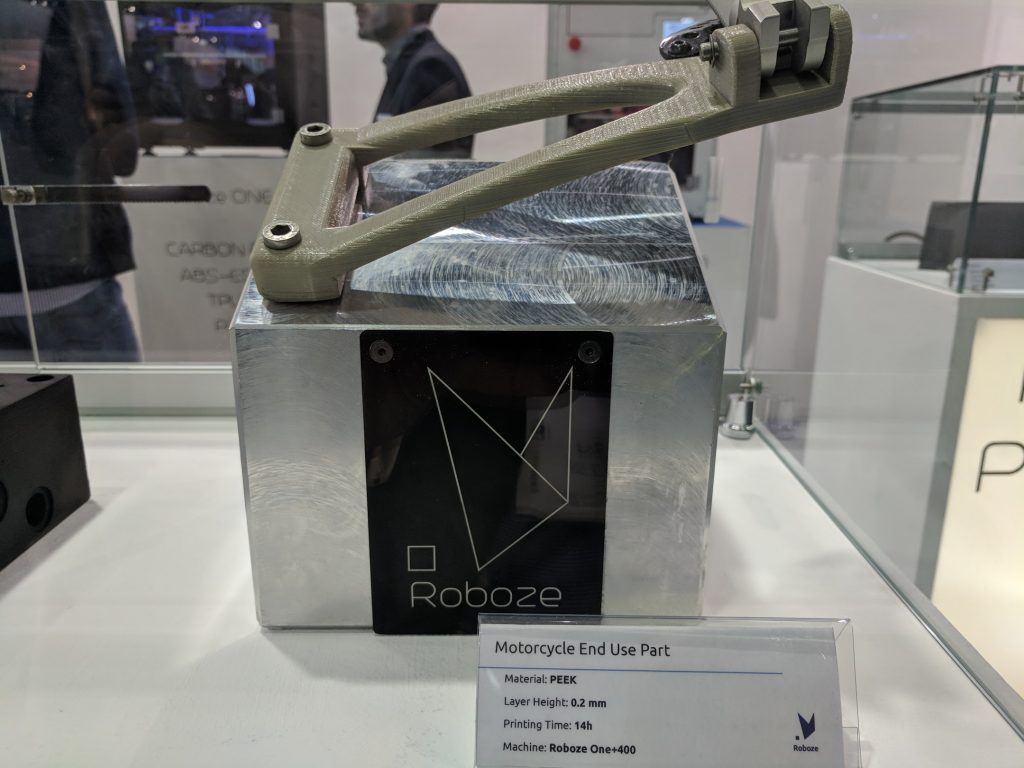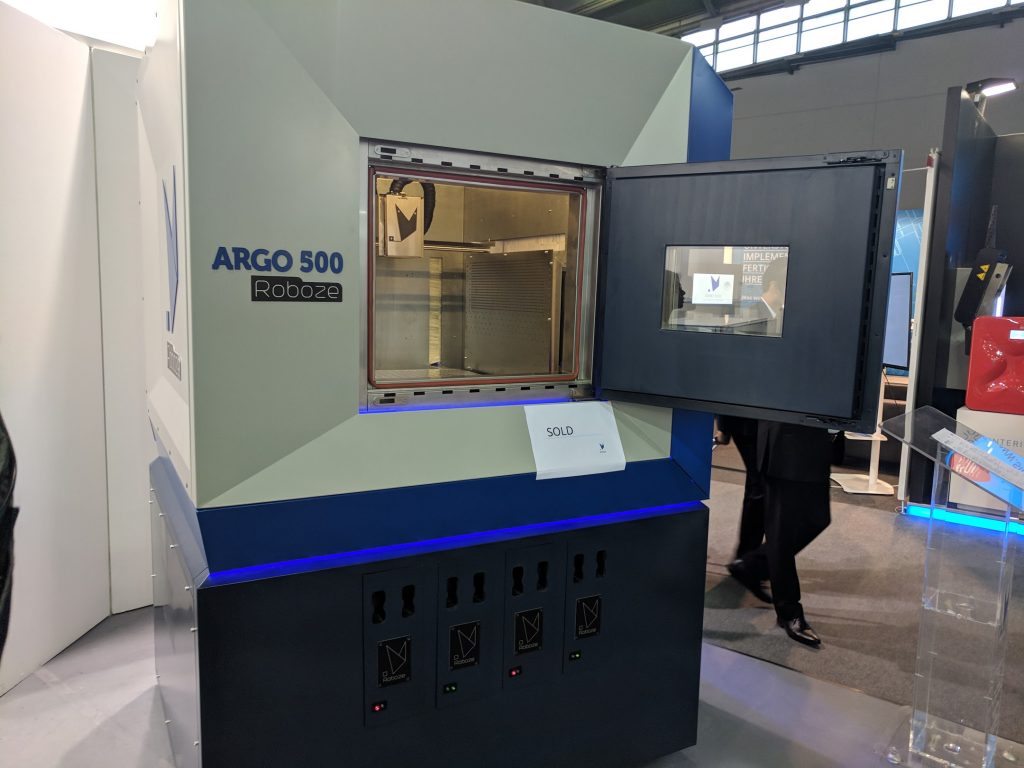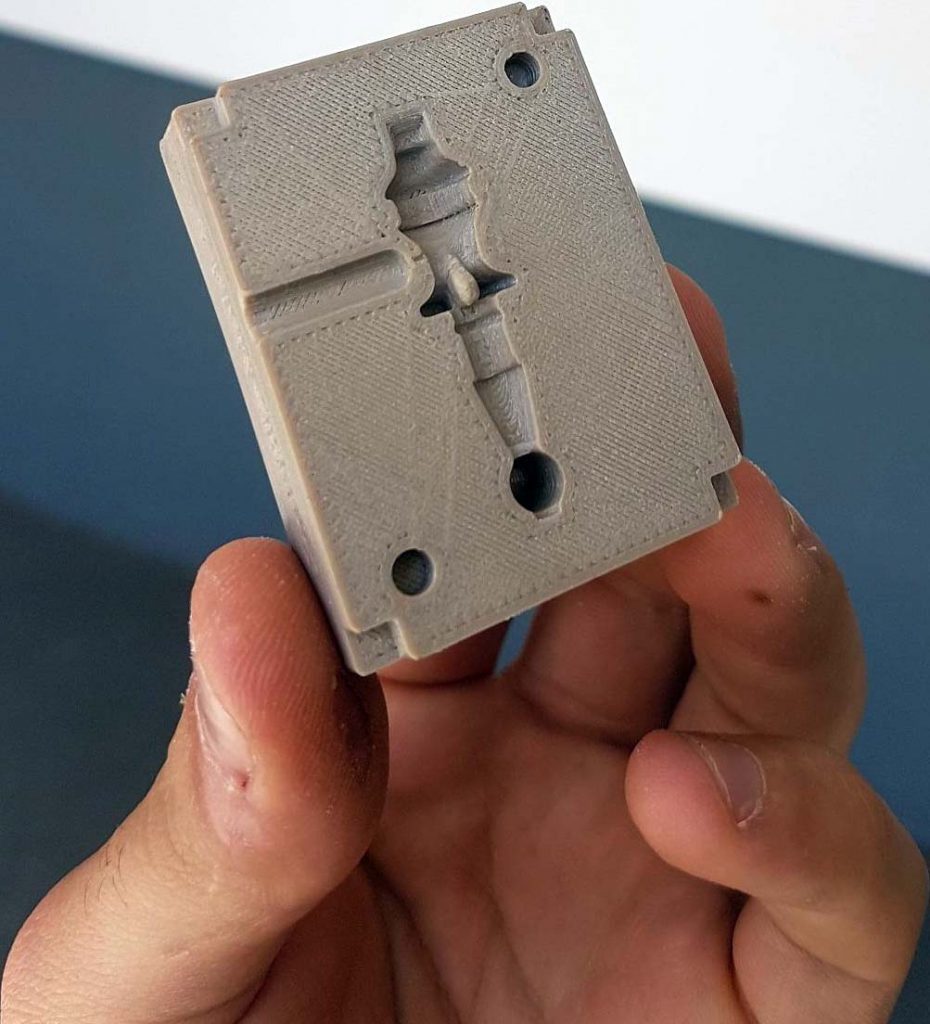3D Printing Industry is taking an in depth look at how additive manufacturing is moving to production. Over the coming weeks the results of interviews with industry leading practitioners will be published.
This article is part of a series examining Trends in Additive Manufacturing for End-Use Production.
Ilaria Guicciardini is Marketing Director at Roboze.
She graduated in Marketing and Business Communication in Bari, and built her professional experience in B2B services. Her greatest characteristics are imagination and practicality, opposed skills that push Ilaria to explore new worlds constantly searching for quality and value stimuli.
Trends in Additive Manufacturing for end-use production with Roboze
3D Printing Industry: What is your percentage estimate of how much your printers are used for production versus other applications?
Ilaria Guicciardini: Roboze immediately came on the market with a differentiation point linked to the ability to produce small series with high repeatability. Thanks to the patented Beltless system, Roboze offers the ability to produce parts with 25 micron mechanical tolerances guaranteeing it every time you print. The Group strongly believes in the possibility of using AM technology for production and this intuition was confirmed year after year by requests from all over the world. Since we are officially on the market, we have been able to see how companies are becoming more and more aware.
Since 2015, the launch year of our first model Roboze One, we have seen a higher percentage of requests for production with AM systems from 8% to 35%. A strong boost was definitely given after the launch of Roboze One + 400, which also allowed SMEs to access highly technical materials such as PEEK, PEI and Carbon PA for metal replacement.
Roboze solutions also fits in between prototyping and production for applications of extreme functional testing – meaning parts which are tested in extreme environments of wide range of temp, pressure, chemical exposure etc. Ultem, Peek & Carbon are used to produce parts for testing real parts, but FDM is not fast enough to manufacture them at scale. However, if there is a need for 10-20 parts only – them customers can do that with Roboze and use them as final parts.

3DPI: Do you have an estimate of the addressable market for AM in production?
IG: Today, more than 1,000 models from over 300 manufacturers are present on the market. Some seventy enterprises produce industrial machines (over $ 5,000), and a dozen offer hybrid systems integrating additive, subtractive (CNC) and robotic assisted production.
The value of goods produced with additive production is about 1% of the global manufacturing market, but is expected to increase sharply over the next few years. This trend, which seems very slow, is definitely determined by the speed with which 3D printing solutions innovate.
The AM market sees day-to-day implementations and new discoveries and technology that proposes on an annual basis radical innovations. This often frightens businessmen who are afraid of investing in a machine that will soon be obsolete. All this needs to be added to the entry of several new important international players, who are willing to mix again the cards on the table.
3DPI: Which industries are leading in the use of AM for production?
IG: The industries that are pursuing the use of AM for production is surely aerospace, aviation, defense, and energy with an estimated CAGR more than 20% over the next 5 years. Following it is not to be underestimated by the medical and educational industries.

3DPI: What barriers does AM face for production and how are these surmountable?
IG: The barriers AM faces at this time are mainly related to the search for qualified personnel. 3D printing technology has only recently seen interest universities and governments so it is difficult for companies to find specialized personnel in AM systems.
Today, the whole world is aware that this new industrial revolution, given the speed of enterprise innovation, is increasingly becoming a reality and, of course, governments and universities are investing heavily in training and upgrading the skills of the new generation.
Practical limitations both for plastic and metal AM are – printing/production speed, materials mechanical properties and qualifications to be used as final parts like in Aerospace.
3DPI: Are there any notable trends in AM for end use production?
IG: Surely the biggest trend is that of producing Jigs & Fixture for production lines. 3D printing is a “single tool” process that does not require molds or assemblies. The opportunity to produce tools locally, reducing production costs, including inventory costs, it is an opportunity for manufacturing companies that wasn’t previously available. Having the ability to do so with technical materials suitable for the testing of the same tools also drives the interest of the companies.
3DPI: Can you name any specific case studies where AM is used for end use production?
IG: The most common case is making molds.
The photo below shows a PEEK printed component that will find application in the food industry. The technique used will be injection molding with PVC material to inject.

The customer opted for this solution because of the need to customize the component on low volumes of production (1000 annually) in terms of shapes and sizes. With the use of the Roboze One + 400 the customer, besides reducing time and cost, has the ability to meet this need with the high performances of the proposed materials and the guarantee of repeatability.
3DPI: Is there is anything else you’d like to highlight in this area?
IG: We are witnessing a new evolutionary step in human history.
Despite the uncertainty given by innovation even at the earliest evolutionary stages, it is already clear that 3D printing is a far-reaching technology with very important economic and social implications.
3D printing naturally covers only part of this new industrial revolution. Personally witnessing how companies around the world are changing their traditional processes to digital ones is a great privilege and a source of motivation.
The final consumer is increasingly at the center of the new product development processes and “restores” the economic nature of the market where it is the demand that create the offer based on his or her own needs. Manufacturing companies can’t ignore this mutation.
Watching today means staying back tomorrow.
You can read more about Roboze here.
Nominations for the 2018 3D Printing Industry Awards are now open. Let us know who is leading the industry.
This article is part of a series examining Trends in Additive Manufacturing for End-Use Production.
If you found this insight useful, then subscribe to our newsletter and follow us on social media.
Featured image shows a manifold 3D printed in Carbon PA by Roboze. Photo by Michael Petch.



